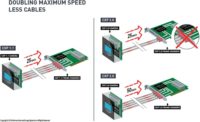What Chief Quality Officers Should be Concerned About in 2019
Quality opportunities are everywhere.

In these highly competitive times, it may seem as though improving productivity is the key to market share. Manufacturers often focus on improving productivity and managing, controlling and reducing costs. While this seems like a worthy goal, it is not. A focus on productivity often backfires. According to the wisdom of W. Edwards Deming, “Improve quality, you automatically improve productivity.” Yet many manufacturing leaders consider quality a cost driver rather than a profit driver.
With the traditional view of quality as an end-of-the-line inspection function, finding a quality problem at the end of the line is an expensive proposition. Recalls can be even more expensive. Consider the cost of some recent recalls: Pfizer spent $3.3 billion in 2009; Takata shelled out $26 billion for its faulty airbags; and Volkswagen reserved $7 billion and counting for its emissions scandal. The Grocery Manufacturers Association pegs the average cost of a food recall at $10 million in direct costs, not counting lost sales and the effects of brand erosion. McKinsey reports that the cost of a single med device recall is upward of $600 million, and the average cost exceeds $5 million a day.
In the end of the line quality scenario, the quality team often takes the blame for late shipments and high rework and recall costs. But blaming the messenger for mistakes that occurred early in the production process—or even in the product design phase—makes no sense.
What does make sense is preventing quality issues from happening. The focus should be on prevention, not containment, of quality problems. But for that to be viable, quality must be a key part of the company strategy.
The Role of Leadership
Many C-level executives believe their organizations have a quality focus. The word ‘quality’ may appear in the company mission statement. There may be posters on the walls in manufacturing. The exec may have authorized the purchase of software or tools to “manage” quality. But they often follow that with “and we have a crackerjack quality team to catch any problems that slip through.” And those are all dead giveaways. Quality is not strategic here; it’s an afterthought. Another quote from Deming seems appropriate at this point: “Quality starts in the boardroom.”
Leaders with a true commitment to quality understand that it starts at the top, and it permeates every corner of the organization. Quality doesn’t start at the receiving dock and end at the shipping dock. It doesn’t happen at the end of the line. Quality opportunities are everywhere.
Quality starts with the first customer touch. The first time the phone rings or the customer visits the web page. Even earlier, when the product team comes up with new product ideas or when engineering develops a new design. Quality happens in the stockroom, in order entry, in marketing, accounting and in sales. Quality must be everywhere. In every process, in every person’s job description and performance metrics.
The only way that can happen is if it starts at the top. Quality must be top of mind for top executives. It’s not a department. It’s a way of life. And you can’t settle for anything less.
Design for Quality
For many years, companies have been trying to design products for manufacturability. The focus of DFM was to improve productivity and thereby reduce costs. But what if, instead of design for manufacturability, we designed for quality? What would that look like?
Products and processes should be created together. Tools, jigs, assembly or machine drawings. Prototypes. Production processes, order entry processes, support processes, packing processes. All of a piece. Training would be companywide. There would be no spelling or grammar errors in the marketing materials.
Quality doesn’t mean that every product from every company must strive to be the market leader in terms of specifications and features. Quality means that the product consistently adheres to its specs, which are consistent with the product’s purpose and pricing.
The Cost of Quality
Six Sigma adherents have long measured cost of quality, broken into four basic types:
Prevention: The cost of keeping a quality problem from occurring. This may include training, assembly aids, supplier certification programs and SPC and inspection software. This is the least expensive form of quality management, because it reduces or eliminates later, and more expensive, quality costs. Having a full view of the data across the organization is a key element in a preventive approach. But not only a view of the data but data that is updated as soon as a variance happens as well as a view of trends.
Appraisal: Inspection costs. This includes gages, software, destructive testing, machine capability and the costs of a traditional quality management team.
Internal Failure: Production of defective units, caught and corrected or scrapped before reaching the customer.
External Failure: Includes the cost of recalls, warranty repairs, field service, legal costs and lost customers. This is the most punishing of all the costs of quality and the longest lasting.
Design Processes
Many companies introduce new products on old production lines, using the same equipment and the same employees. This may be perfectly fine, if the existing process turns out to be the best, most effective process for the new product. The bad news is that it probably isn’t.
At the very least, the design team and the production engineering team should work together to tweak existing processes. This is not the ideal method of designing processes. The best method is to begin with the fewest number of restraints possible to design the ideal process for the new product. It may require adaptation to fit the reality of the production environment, but management should understand the cost of the adaptation in terms of product cost, not quality reduction.
While designing production processes, make sure all your business processes also work for the new product. Do you need new models for configuration? Are there complementary products or substitutions that must be set up in advance? How will the product be packaged for shipment? The best way to handle this is to assemble a cross-functional team and have them walk through every step in the journey, from first inquiry to product use at a customer site.
Prevention, Not Containment
Traditional views of quality management were all about containment—identifying the affected lots and putting them in quarantine until disposition. That goes right to the expensive appraisal and internal failure cost of quality buckets. Or worse yet, the external failure bucket.
The ideal is to design for quality. Put the resources into prevention activities, not containment.
Tools You Can Use
Every company needs quality management tools. Some companies try to get by with paper systems or spreadsheets. Those methods don’t work well in the long run, and their use shows that the company focuses on cost cutting, rather than problem prevention. Companies should invest in one or several quality management tools.
Inspection software or statistical process control software can help reduce higher level cost of quality by identifying quality issues before they grow. SPC can sound alerts when processes approach pre-set thresholds so the team can make adjustments before production goes out of spec. Inspection software reduces errors in the tedious process of sampling and calculating deviations.
CAPA (corrective action/preventive action) software helps track engineering changes and can reduce the cost of rework or eliminate future safety and reliability problems.
APQP (advanced product quality planning) software helps by defining a process for design for quality and ensuring that the team works toward quality objectives.
Training programs help ensure that the team has the skills and knowledge necessary to do their jobs safely and correctly.
A robust quality management system (QMS) will include all these capabilities and eliminate the cost of expensive system integrations or entering data into multiple systems. In addition, look for a system that includes process management, compliance audits and tools for continuous improvement. The company should consider its QMS system to be as strategic as the company’s ERP or accounting software decision, since it will have an equal or greater effect on the company’s performance. The selection process should include input from multiple departments, including top executives, who will find it invaluable for ensuring that everyone in the company understands the quality imperative.
Summary
We live in a world of unprecedented disruption and change; demands by consumers for instant availability, ever increasing deployment of ‘bots’ of many kinds, changes in how we received goods or move them and ourselves such as autonomous vehicles.
In the type of environment the effort of guaranteeing predictability of delivery and quality has never been higher. The interweaving of quality and manufacturing will produce these results and may actually put more dollars in the margin. Q
Looking for a reprint of this article?
From high-res PDFs to custom plaques, order your copy today!





